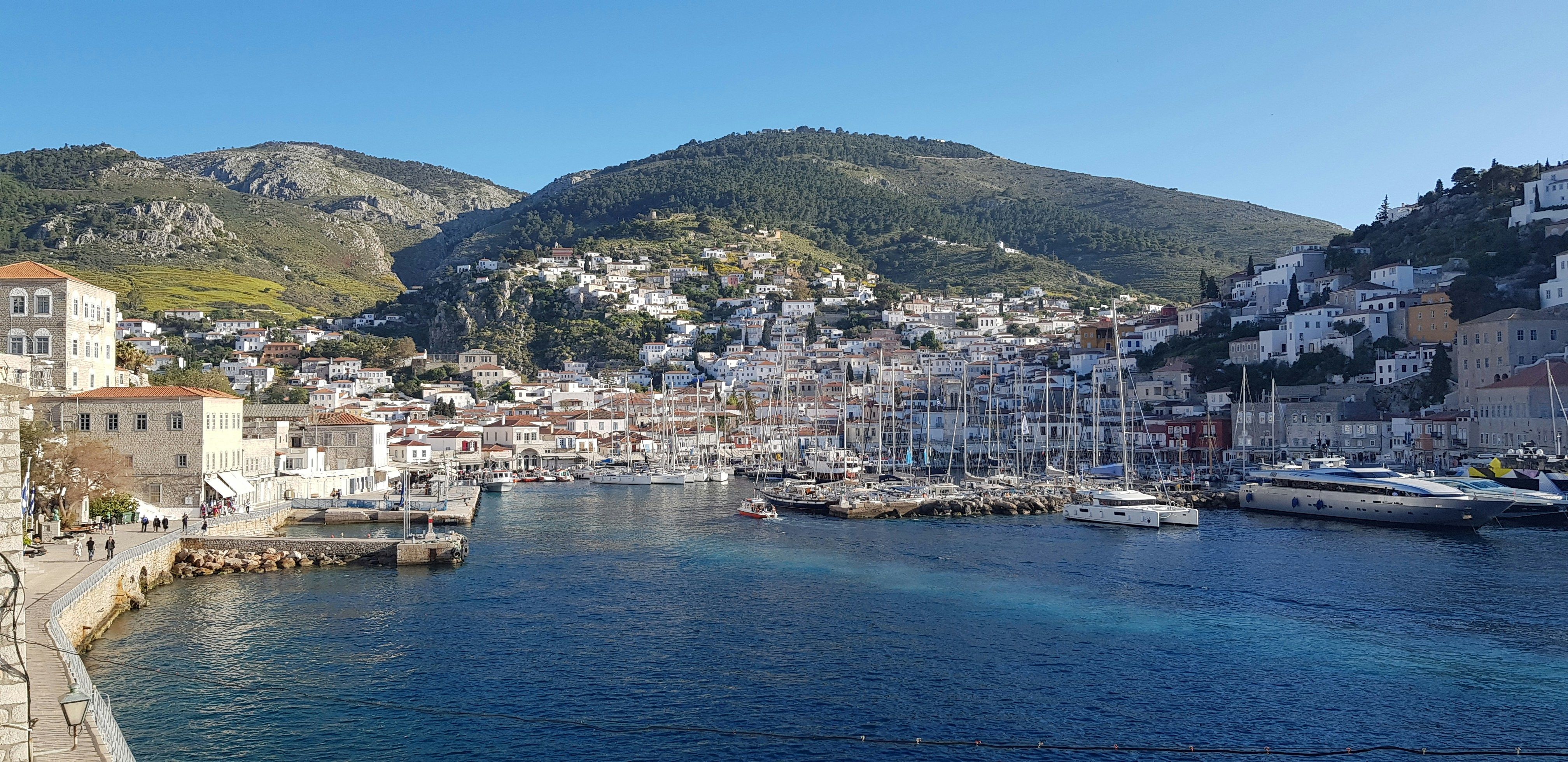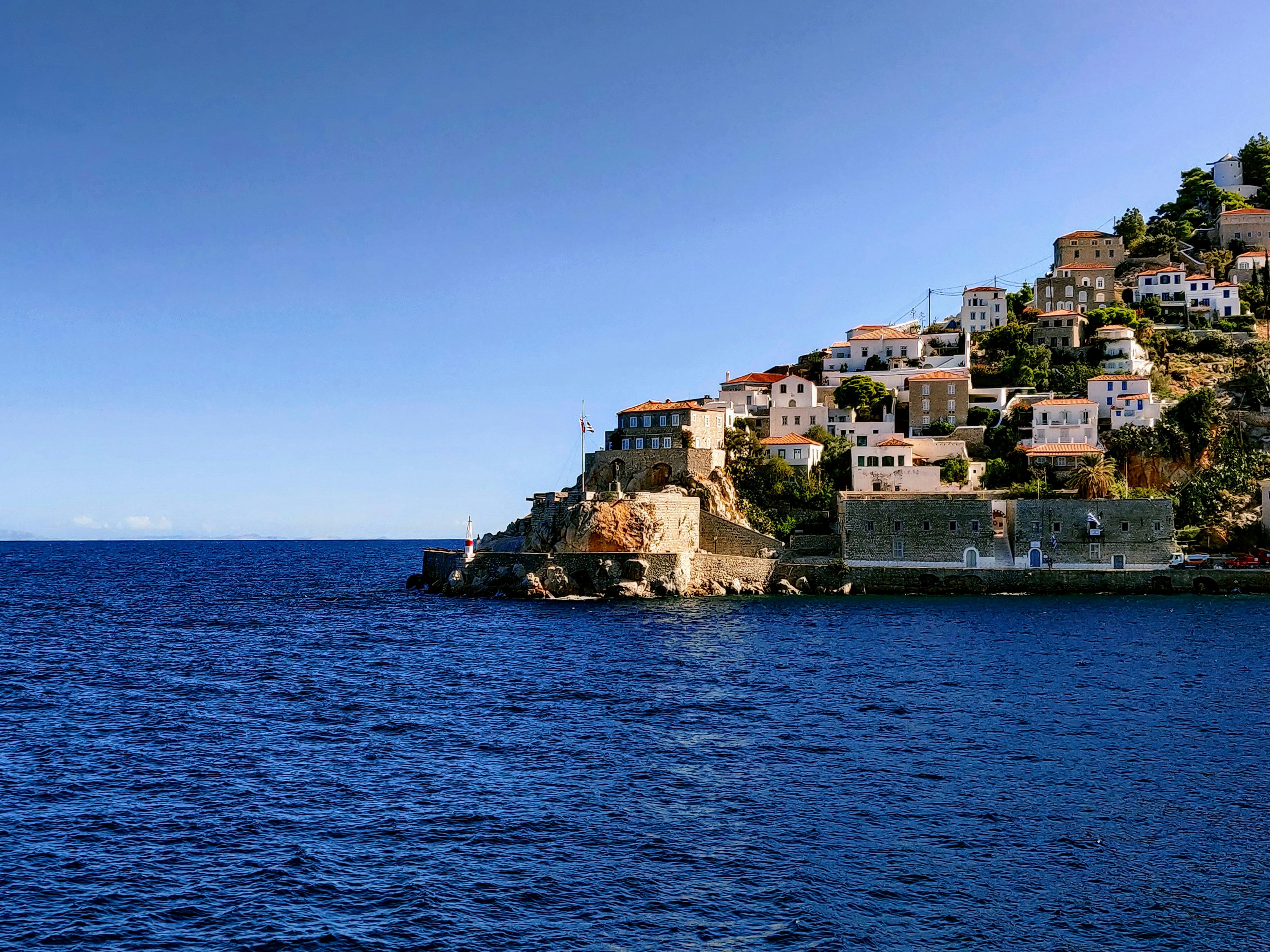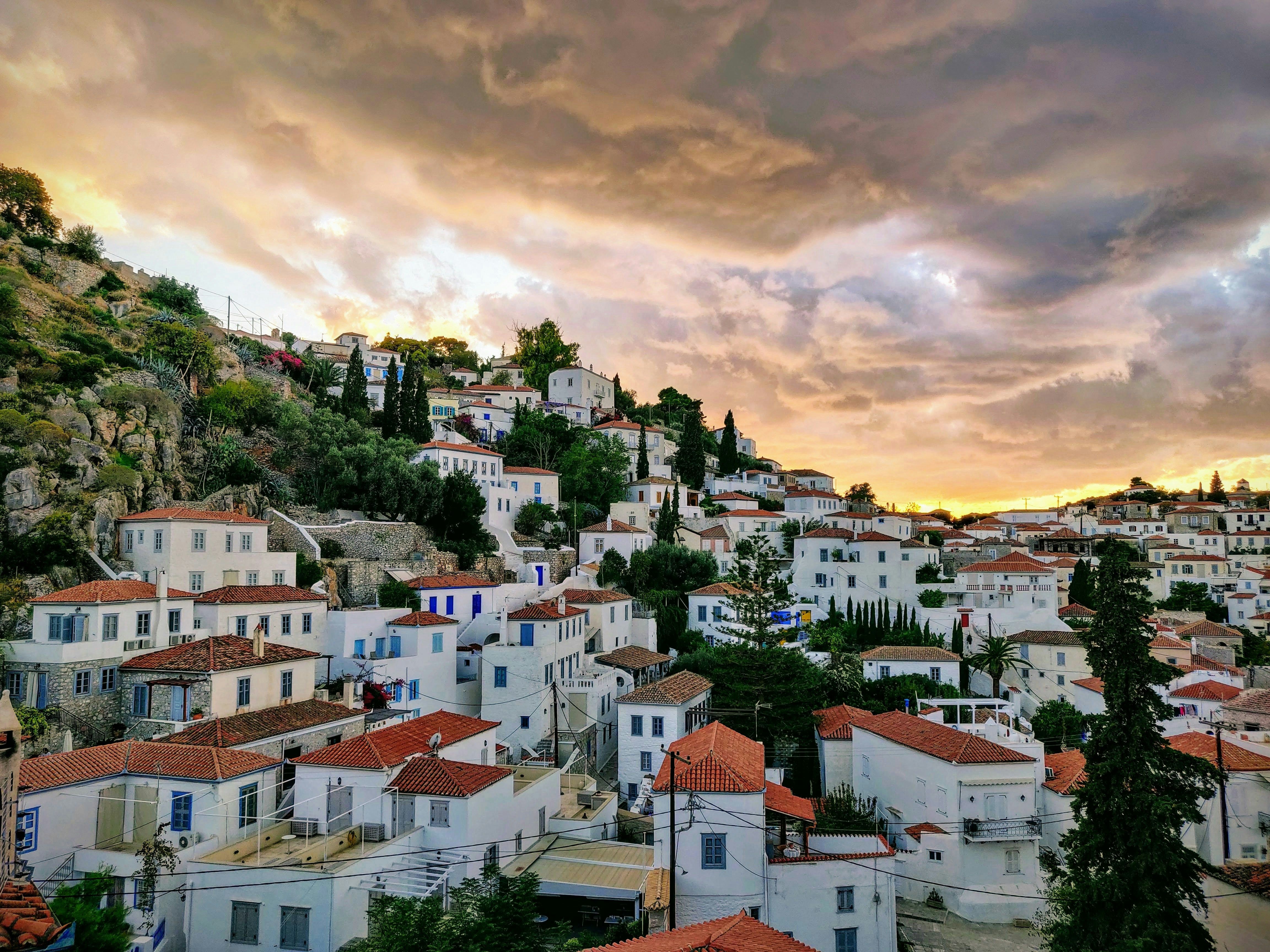Travelling from Ermioni to Hydra: Complete Ferry & Travel Guide
Travel Guides
Travel Guides


Exploring the journey from Ermioni to Hydra offers travellers a glimpse into one of Greece's most picturesque maritime routes. This popular crossing connects the mainland Peloponnese town of Ermioni with the captivating car-free island of Hydra, spanning just 24.5 km (15.2 miles) across the sparkling Aegean waters. While ferry travel is the primary and most scenic option for this route, taking approximately 25 minutes on average, we'll also touch on alternative travel considerations to help you plan your perfect Greek adventure. Whether you're planning a day trip or an extended stay, this comprehensive guide covers everything you need to know about travelling between these two charming destinations, from ferry schedules and port information to the best attractions waiting for you on Hydra.
The ferry journey from Ermioni to Hydra is the definitive way to travel between these destinations. With the mainland and island separated by just 13.2 nautical miles, ferries provide a quick and scenic connection that flights simply cannot offer. In fact, there are no direct flights between these locations, as Hydra proudly maintains its status as a car and flight-free island, preserving its traditional charm and tranquillity.
Ferry services operate year-round, with approximately 9 weekly sailings and 41 monthly connections, averaging about 1 sailing per day. The journey takes around 25 minutes on average, making it a convenient option for travellers. The shortest crossing time is just 20 minutes with Hellenic Seaways, while the longest duration is approximately 30 minutes.
Price-wise, expect to pay around £50 for a standard foot passenger ticket with Hellenic Seaways, though prices may vary depending on the season, with summer months typically commanding higher fares. The ferry experience itself offers spectacular views of the coastline and approaching Hydra's picturesque harbour – a visual introduction to the island that no other form of transport can match.
You can take a ferry from Ermioni to Hydra. Ferries sail in around 25 minutes with about 1 sailing a day. The fastest ferry sails in around 20 minutes and is provided by Hellenic Seaways. Ferry prices are typically around £50 for foot passengers. Departures start as early as 06:50, with the last departure from Ermioni to Hydra at 17:20.
Hellenic Seaways is the primary operator serving this route, offering modern vessels equipped with comfortable seating areas, outdoor deck space for enjoying the sea breeze and panoramic views, and basic refreshment services. Their ferries are designed to provide a smooth and efficient crossing experience.
Since Hydra is famously car-free, these ferries primarily cater to foot passengers. You won't need to worry about vehicle bookings or restrictions, as cars are not permitted on the island. This unique aspect of Hydra contributes to its peaceful atmosphere and traditional character.
The ferry schedule varies throughout the year, with more frequent services during the peak summer season (June through September). If you're travelling during this busy period, it's advisable to book your tickets in advance to secure your preferred sailing time. In the off-season, while there are fewer daily connections, the service remains reliable for residents and visitors alike.
Most ferries on this route are conventional vessels rather than high-speed craft, providing a comfortable journey without sacrificing too much time, given the short distance between ports.

Ermioni port is located on the eastern coast of the Peloponnese peninsula, with ferry services departing from the main harbour area. The port itself is relatively small and straightforward to navigate, situated within walking distance of the town centre.
To reach the port, visitors staying in Ermioni can easily walk to the harbour, as the town is compact and pedestrian-friendly. For those arriving from other locations, there are regular bus services connecting Ermioni with larger towns like Porto Heli and the city of Athens (approximately 3 hours away). Taxis are also available for direct transfers from nearby areas.
The port facilities are basic but adequate, with a few cafes and shops near the embarkation point where you can purchase refreshments or last-minute supplies. There's a ticket office where you can buy or collect pre-booked ferry tickets, though booking in advance online is recommended, especially during summer months.
Limited parking is available near the port for those arriving by car, but spaces fill quickly during peak season. If you're planning to leave your car in Ermioni while visiting car-free Hydra, arrive with plenty of time to secure parking.
Hydra's port is a picturesque horseshoe-shaped harbour that serves as the main gateway to the island. Upon arrival, you'll immediately notice the absence of motorised vehicles – one of Hydra's most distinctive features.
The port area is the heart of Hydra Town, with restaurants, shops, and accommodations radiating outward from the harbour. Navigation is straightforward as the main commercial area is concentrated around the waterfront.
From the port, transportation options are charmingly traditional. The island operates entirely without cars or motorbikes, so your choices for getting around include:
Port facilities include tourist information points, ATMs, luggage storage services, and numerous cafes and restaurants where you can relax after your journey. The harbour area is well-equipped with public restrooms and small shops for essential items.
A day trip from Ermioni to Hydra is not only feasible but highly recommended for travellers based on the mainland who want to experience this unique island without an overnight stay. With the earliest ferry departing Ermioni at 06:50 and the latest return sailing at 17:20, you can enjoy approximately 8-10 hours on the island – ample time to explore its main attractions.
An ideal day trip itinerary might look like this:
Morning: Depart Ermioni on an early ferry, arriving in Hydra by 07:15. Begin with breakfast at one of the harbour-front cafes, then explore Hydra Town's narrow streets and stone mansions. Visit the Historical Archives Museum to learn about the island's maritime history.
Midday: Take a water taxi to one of Hydra's beaches like Vlychos or Kamini for swimming and relaxation, or hike to Profitis Ilias Monastery for panoramic views (approximately 1-2 hours round trip).
Afternoon: Return to Hydra Town for a late lunch at a traditional taverna. Spend your remaining hours shopping for local crafts, visiting art galleries, or simply enjoying the atmosphere from a waterfront cafe before catching the afternoon ferry back to Ermioni.
If a day trip isn't possible with your schedule, consider spending at least one night on Hydra to experience the island after the day-trippers leave, when its authentic character truly shines. With only one daily sailing on some days, checking the ferry schedule in advance is essential for day trip planning.
Despite its small size, Hydra offers a wealth of experiences for visitors:
Hydra Town and Harbour - The main settlement is a protected architectural reserve with elegant stone mansions built by 18th-century shipping merchants. The horseshoe-shaped harbour buzzes with activity and offers perfect photo opportunities. Open all hours, this living museum is free to explore.
Historical Archives Museum - Housed in an old stone mansion, this museum documents Hydra's significant role in Greek maritime history and the 1821 War of Independence. Open 09:00-16:00 daily except Tuesdays, entry fee approximately £4.
Profitis Ilias Monastery - Perched high above Hydra Town, this monastery rewards hikers with spectacular panoramic views of the island and surrounding Aegean. The moderately challenging trail takes about an hour each way. The monastery is open 10:00-14:00 daily.
Beaches and Swimming Spots - While Hydra doesn't have many sandy beaches, it offers beautiful swimming locations including Vlychos Beach, Kaminia, and Spilia swimming platform near the port. These spots are accessible by water taxi or on foot and are ideal for cooling off during summer months.
Sunset at Kodylenia's - This taverna in the small fishing village of Kamini offers one of the island's most spectacular sunset views. Accessible via a 20-minute coastal walk from Hydra Town, it's perfect for evening dining with a view.
Hydra Town - The main settlement contains most tourist amenities, shops, restaurants, and cultural attractions. Its narrow, vehicle-free lanes climbing up from the harbour are perfect for wandering.
Kamini - A small fishing village about 20 minutes' walk west of Hydra Town, offering a more laid-back atmosphere and excellent seafood restaurants.
Vlychos - Further west from Kamini, this small settlement features a pebble beach and traditional tavernas with fewer tourists.
Mandraki - Located to the east of Hydra Town, this area houses a former naval base and one of the island's better organised beaches.
Upper Town (Kiafa) - The highest residential area of Hydra Town, featuring older architecture and panoramic views for those willing to climb the steps.
Hydra enjoys a typical Mediterranean climate with distinct seasonal patterns that can affect both your travel experience and ferry operations.
Summer (June to September) brings hot, dry conditions with temperatures regularly reaching 30-35°C (86-95°F). This peak season offers reliable ferry connections and perfect swimming weather, though July and August can be uncomfortably hot for extensive sightseeing or hiking. The sea temperature is most inviting during these months, averaging 23-25°C (73-77°F).
Spring (April to May) and autumn (October to November) offer milder temperatures of 18-25°C (64-77°F) with fewer crowds. These shoulder seasons provide ideal conditions for exploring the island on foot, with comfortable temperatures and abundant wildflowers in spring or warm sea temperatures lingering into autumn.
Winter (December to March) sees temperatures ranging from 8-15°C (46-59°F) with increased rainfall. While ferries continue to operate year-round, winter sailings are more susceptible to cancellation during occasional strong winds and storms. Many tourist businesses reduce hours or close entirely during this quieter season, though the island retains its authentic charm for visitors seeking a more local experience.
Regarding ferry operations, the Ermioni-Hydra route is relatively sheltered compared to some longer Greek island routes, but strong southerly winds can occasionally disrupt services, particularly in winter. The short crossing distance means that when weather permits, the journey remains quick and comfortable year-round.

Hydra ranks among the more expensive Greek island destinations due to its popularity with affluent travellers and the logistical costs of supplying a car-free island. However, with some planning, visitors can enjoy this unique destination across various budget levels.
A standard ferry ticket from Ermioni costs around £50 per person each way. Once on the island, daily expenses vary by travel style:
For budget travellers, expect to spend approximately £70-100 per day, including a simple room in a pension (£40-60), meals at basic tavernas (£8-15 per meal), and minimal extras. Budget-conscious visitors should consider travelling in shoulder season (May/June or September/October), bringing a water bottle to refill, and exploring the island on foot rather than using water taxis.
Mid-range travellers typically spend £100-200 daily, staying in comfortable hotels (£80-150), dining at mid-range restaurants (£15-30 per meal), and enjoying some activities like water taxis to beaches (£5-10 per journey).
Luxury travellers can easily spend £200+ daily with boutique hotel accommodations (£150-300+), fine dining (£30-60 per meal), and private boat tours around the island (£150+).
Common expenses include coffee (£3-5), beer (£4-6), simple gyros sandwich (£5-7), and museum entries (£3-8). Donkey rides for luggage transport typically cost £5-10 depending on distance.
The ideal time to visit Hydra depends largely on your preferences for weather, crowds, and activities:
Peak season (July-August) brings hot weather perfect for swimming, with water temperatures at their warmest and all tourist facilities operating at full capacity. However, this coincides with significantly higher prices, crowded streets in Hydra Town, and occasional difficulty securing accommodations without advance booking. Daytime temperatures often exceed 30°C, making midday exploration challenging.
Shoulder seasons (May-June and September-October) offer the best balance for most travellers. Temperatures remain pleasant (20-28°C), the sea is warm enough for swimming, and the island feels lively without being overwhelmed. Prices drop somewhat from peak rates, and you'll find more space to enjoy the beaches and hiking trails. Ferry services run regularly, though with slightly reduced frequency compared to peak months.
Off-peak (November-April) presents Hydra at its most authentic, when local life takes centre stage. Winter brings cooler temperatures, occasional rainfall, and significantly reduced tourist infrastructure – many restaurants and some accommodations close for the season. However, budget-conscious travellers will find the lowest prices of the year, peaceful streets, and a chance to experience island life as locals do. Ferry services continue year-round, though with reduced schedules and occasional weather-related cancellations.
For specific experiences, consider timing your visit around local events like the Miaoulia Festival in late June (commemorating Admiral Miaoulis with naval reenactments and celebrations) or Holy Week before Orthodox Easter (featuring beautiful processions and traditions).
Photography enthusiasts might prefer the clear light of spring or autumn, while hikers will appreciate the cooler temperatures of these seasons for exploring the island's trails. For the quintessential Greek island experience with swimming and outdoor dining, late June and early September offer ideal conditions without the extreme crowds of July and August.
Hydra offers a range of accommodation options to suit different budgets and preferences. The island's car-free status means most lodgings are within walking distance of the main attractions and harbour area.
For travellers watching their spending, Hydra has several guesthouses and small family-run establishments starting from around £60 per night. Many are located within 10-15 minutes walk from the harbour, offering authentic Greek hospitality.
Couples might enjoy the island's boutique hotels housed in restored captains' mansions, typically ranging from £100-200 per night. These often feature traditional architecture with modern amenities.
Families can find comfortable apartments and holiday rentals throughout the island, many with kitchenettes and multiple bedrooms to accommodate everyone comfortably.
We recommend booking accommodation well in advance during the peak summer season (June-September) when Hydra becomes particularly popular with visitors arriving on the regular ferry services from Ermioni.

One of Hydra's most charming features is its car-free status. The island offers a refreshing break from traffic and noise, with unique transport options:
Walking is the primary way to get around Hydra Town and nearby areas. The main harbour area is compact and easily explored on foot. Comfortable walking shoes are recommended for the island's cobblestone streets and steps.
Water taxis operate from the main harbour to beaches and coastal settlements around the island. These typically cost between £5-15 depending on the distance and are a scenic way to reach more remote spots.
For a truly authentic experience, donkeys and mules are available for hire at the harbour (around £10-15) and serve as the traditional transport method for luggage and supplies around the island. They're also perfect for reaching some of the higher viewpoints without the climb.
The island's compact size (just 50 km² total) means most attractions are accessible within a reasonable walking distance or a short water taxi ride from the main port where your ferry from Ermioni will arrive.
The journey from Ermioni to Hydra represents one of the most efficient and scenic ferry routes in the Greek islands. With Hellenic Seaways offering the fastest crossing time of just 20 minutes and tickets starting from around £50, this sea route provides the perfect gateway to one of Greece's most distinctive islands.
Whether you're planning a day trip or an extended stay, the frequent ferry connections (with 9 weekly sailings) make planning your journey straightforward. The earliest departure at 06:50 allows for full-day excursions, while the latest return sailing at 17:20 gives you plenty of time to explore.
Experience the unique charm of car-free Hydra, with its preserved 18th-century architecture, crystal-clear waters, and authentic Greek atmosphere—all just a short 13.2 nautical mile ferry ride from the mainland at Ermioni.
Book your ferry tickets in advance, especially during the busy summer months, to secure your preferred sailing times and begin your perfect Greek island adventure!